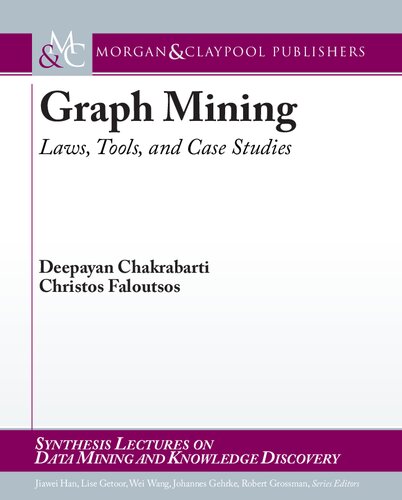

Most ebook files are in PDF format, so you can easily read them using various software such as Foxit Reader or directly on the Google Chrome browser.
Some ebook files are released by publishers in other formats such as .awz, .mobi, .epub, .fb2, etc. You may need to install specific software to read these formats on mobile/PC, such as Calibre.
Please read the tutorial at this link: https://ebookbell.com/faq
We offer FREE conversion to the popular formats you request; however, this may take some time. Therefore, right after payment, please email us, and we will try to provide the service as quickly as possible.
For some exceptional file formats or broken links (if any), please refrain from opening any disputes. Instead, email us first, and we will try to assist within a maximum of 6 hours.
EbookBell Team

4.8
14 reviewsIn this work, first we list several surprising patterns that real graphs tend to follow. Then we give a detailed list of generators that try to mirror these patterns. Generators are important, because they can help with "what if" scenarios, extrapolations, and anonymization. Then we provide a list of powerful tools for graph analysis, and specifically spectral methods (Singular Value Decomposition (SVD)), tensors, and case studies like the famous "pageRank" algorithm and the "HITS" algorithm for ranking web search results. Finally, we conclude with a survey of tools and observations from related fields like sociology, which provide complementary viewpoints.
Table of Contents: Introduction / Patterns in Static Graphs / Patterns in Evolving Graphs / Patterns in Weighted Graphs / Discussion: The Structure of Specific Graphs / Discussion: Power Laws and Deviations / Summary of Patterns / Graph Generators / Preferential Attachment and Variants / Incorporating Geographical Information / The RMat / Graph Generation by Kronecker Multiplication / Summary and Practitioner's Guide / SVD, Random Walks, and Tensors / Tensors / Community Detection / Influence/Virus Propagation and Immunization / Case Studies / Social Networks / Other Related Work / Conclusions